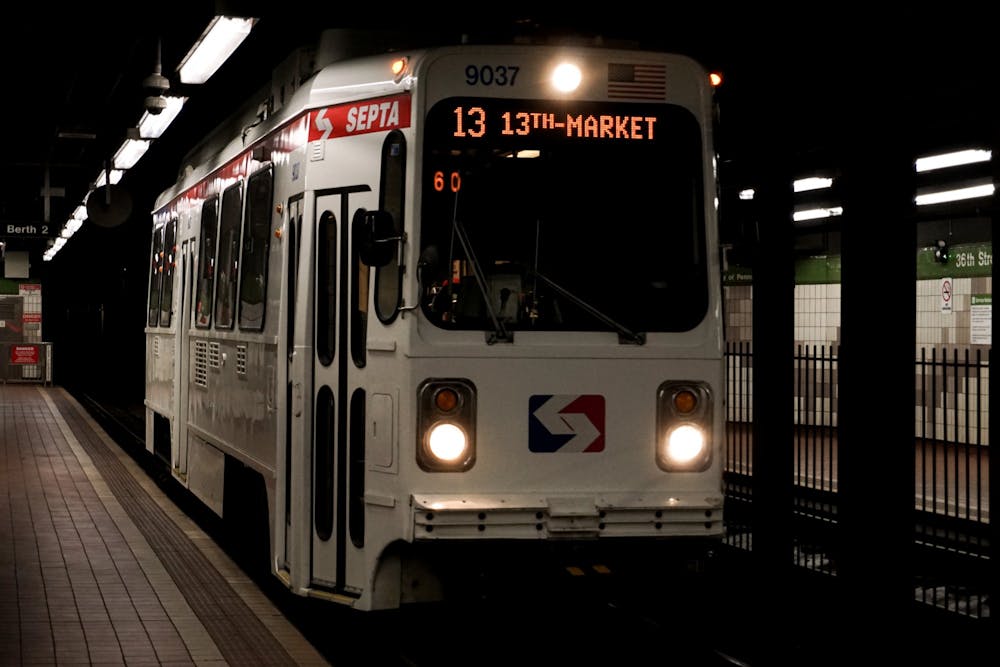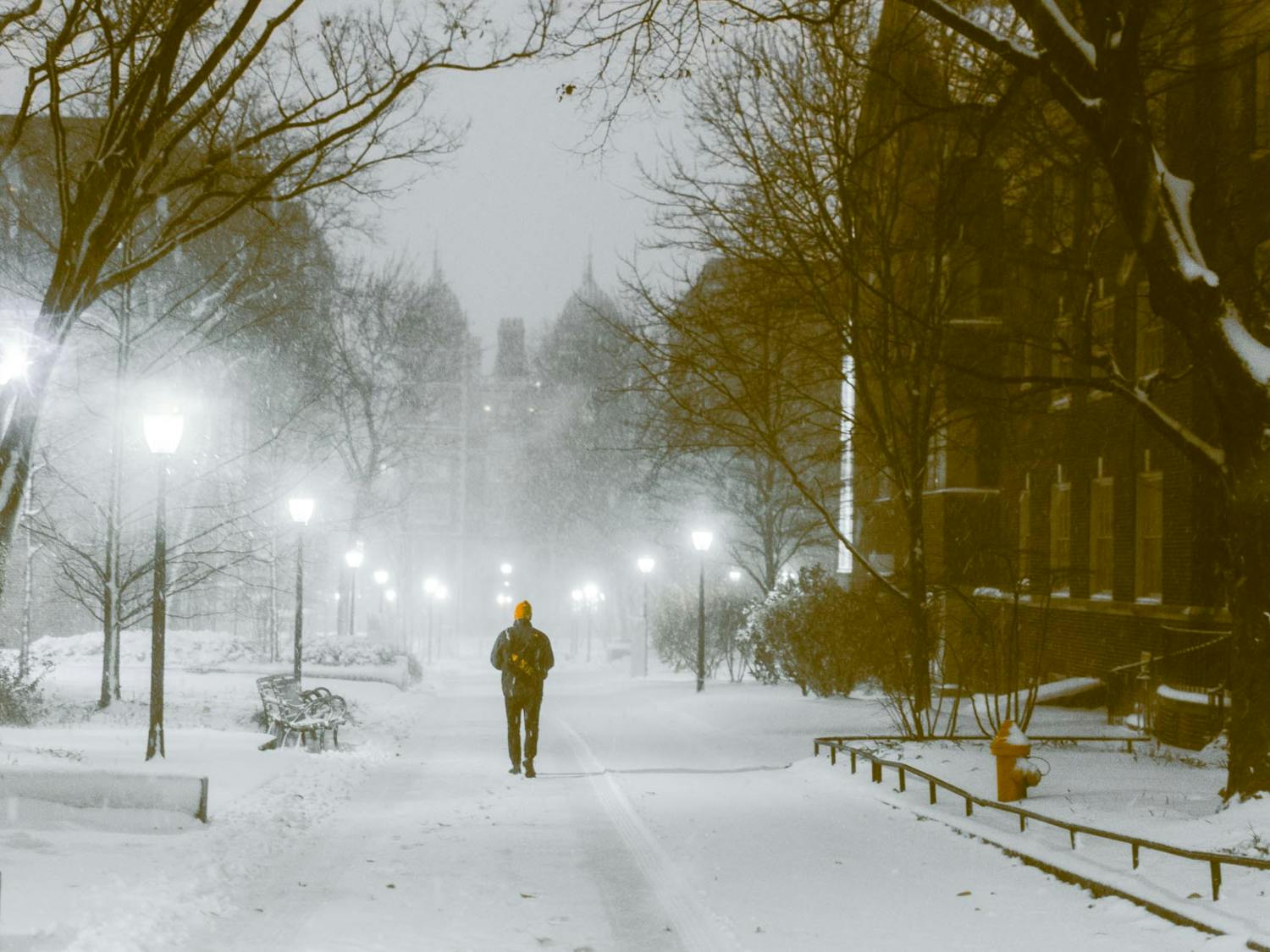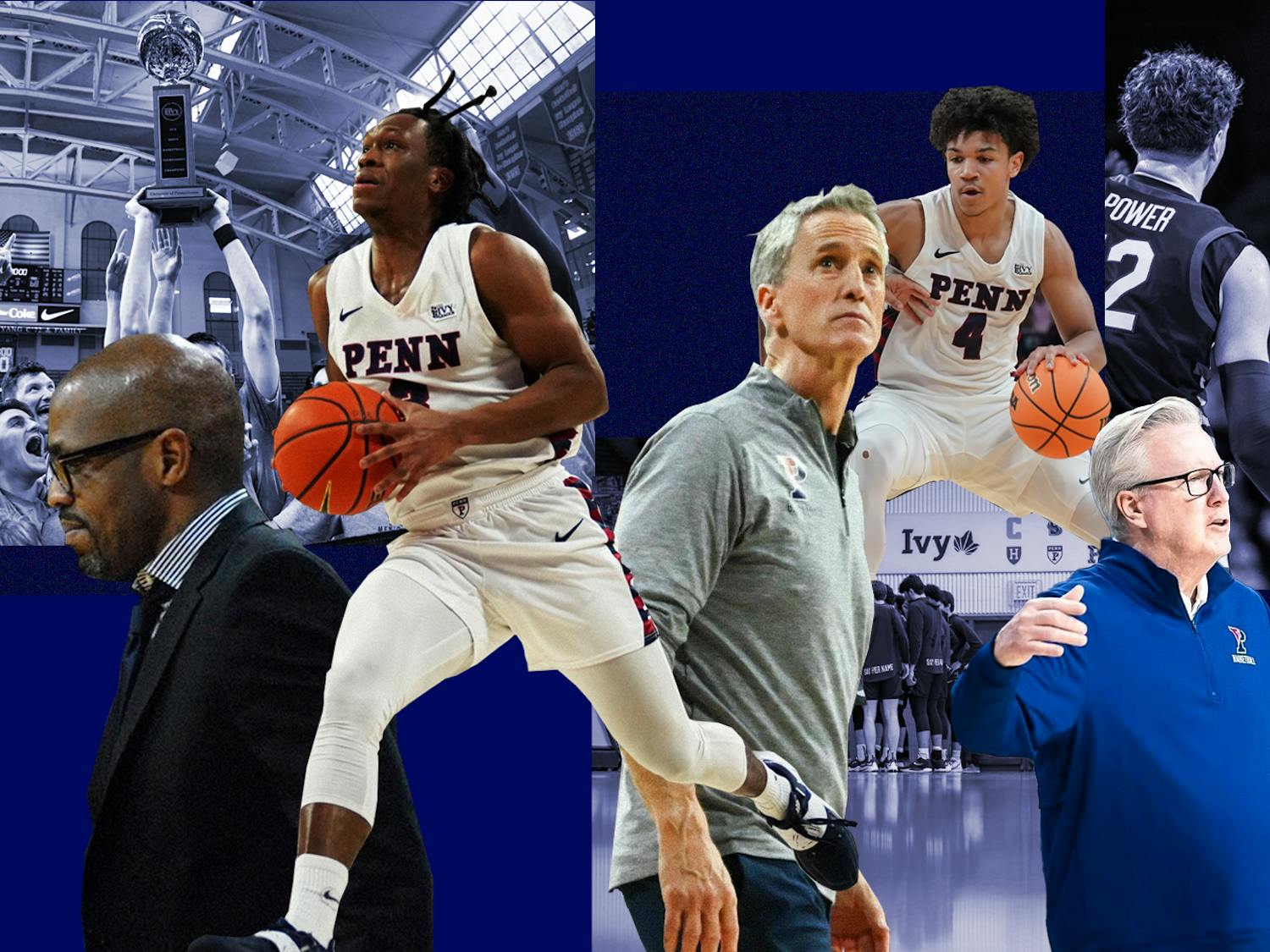The conversation circling SEPTA is more nuanced than headlines make it appear.
UPENN ALERT: Report of Gunshots Fired | 4000 block of Market Street. Philadelphia and Penn Police responded to a report of gunshots being fired in the area of 4000 block of Market Street.
BREAKING: A man is dead after being stabbed on the train platform at 8th & Market streets in Center City.
These headlines only fuel Penn students’ long-held safety concerns riding SEPTA. When it comes to Philadelphia’s transit system, these thoughts percolate: SEPTA is not the preferred form of transportation. SEPTA is unsafe, dirty. Instead, students prefer to turn what would be their $2.50 fare into what can be a $20 Lyft or Uber ride, all in the name of safety.
Perhaps the age-old “don’t go past 40th Street” toxic belief at Penn also complicates conceptions about safety around particular stations. This disposition makes news about SEPTA even more grim, that perhaps precarious transit exists due to a precarious city. In early February, at the cusp of Penn’s bubble, a shooting occurred near the 40th Street station. 8th and Market streets station made headlines this year after a man was stabbed to death on the train platform. These examples of violence are easy to recall and hard to forget. While many Philadelphians and Penn students alike can attest to an uncomfortable experience on public transit, do these fears reflect reality? And can these perceptions look different depending on the person?
One in two women feel unsafe walking alone at night. Compare this to the one in seven men who report similar sentiments. Women are fundamentally more unsafe in public, often recipients to a large range of uncomfortable experiences from catcalls to violent attacks. The confines of a trolley car can only multiply these behaviors and sometimes, for women, the choice of taking public transit isn’t one that is inherently “safe” considering what could potentially happen.
These concerns are warranted. A year and a half ago, the westbound Market-Frankford Line made national headlines after a woman was publicly raped on a SEPTA car. As shocking as the assault itself was the bystanders that allowed it to occur. For women, the choice to splurge on an Uber can be a matter of life and death.
There exists a public transit paradox then, particularly for women: people want to take public transit, for convenience or to save money or be eco conscious, but this leads them to ride-sharing apps instead.
Samantha Cueto, a Nursing junior, typifies her experiences riding public transit, citing safety concerns regarding the times she travels. “I would like to take SEPTA [during] normal times,” she said, acknowledging her pattern of traveling at night, rather than during the day, which she alludes is a safer riding experience. “I’ll go out in the evening for dates. I do take the Septa late at night … [but] never alone.”
‘Never alone’ is an unfortunate reality for many individuals when it comes to ensuring safety on public transit. Cueto also described an incident at a SEPTA platform where she was harassed by a man for money, an incident that put her in an uncomfortable spot as a woman. Accompanied by a few friends and her boyfriend when it happened, she had offered him a couple of singles, but the man was persistent in having her break the fifty that had slipped out from her wallet. “If my boyfriend wasn’t there, I would have been frightened,” she said. “That’s just what being a girl is like in Philly.”
Sarah Belle Kim, a College sophomore transfer student from New York views SEPTA a little differently. Back home, she views the New York City subway system as an affordable, fast way to get around the city. Yet, she is cognizant of the Asian-targeted violence on the subway post pandemic, fearing for her older relatives, particularly her grandparents, after noticing a lot of the assaults were towards Asian elders. “It’s just hard hearing about that on the news,” she says.
When questioned about whether or not that has affected her riding habits or behavior on public transit in New York, Kim explains that though she personally hadn’t changed her transit habits, she noticed her friends making drastic changes on their appearances for a sense of security in train cars. “I have a friend who is Korean American whose mom said she should dye her hair blonde so people on the subway would think that she was white,” she says.
In Philadelphia, Kim echoes Cueto's safety concerns about taking transit alone past dark. “If I’m with friends, maybe I’ll take [SEPTA] with them, but if I’m alone probably not,” she says. “When it is late at night, I would take an Uber if I’m far away from campus or do Penn Rides.”
Despite all this, however, Kim remains optimistic. Wanting to get to places like Center City quickly and for cheaper prices, she’s trying to take advantage of the metropolitan transit system, even if it means compromising on when she gets to take it. “I would say if you are concerned about safety and you can afford to not take the SEPTA, that’s totally fine. But that’s not an option everybody has,” she says.
If we look at these incidents at face value, it can be very easy to assume that public transit is inherently and extremely dangerous. Yet, we are hesitant to write off public transit altogether. Penn students and nonnative Philadelphians alike that are cognizant of (mis)conceptions about safety should consider: Do you feel unsafe on public transit, or unsafe in general?
Ultimately, SEPTA isn’t the causal factor for race-based and gender-based violence. Rather, buses, trolleys, and transit cars reveal the invisible social tensions that bind us. SEPTA magnifies the larger social issues we collectively must tackle. Public transportation is just a microcosm of bigger societal issues: violence against Asian Americans, sexual assault against women, the wealth gap, racial biases and hate crimes … the list goes on.
In an age of rapid privatization of public space, the confined walls of a transit car are one of the last public commons so readily accessible. Where else in modern society are you forced to interact with other people, let alone people of differing economic and racial backgrounds? We are offered an affordable ride with the price (and sometimes added benefit) of human interaction.
The public transit dilemma is more complex than we make it out to be. To write off public transportation entirely is misguided and a mistake. Public transit is a microcosm of the many social issues plaguing our society, particularly when and where women and racial minorities feel safe.
From the early days of New Student Orientation, students are taught that inside the confines of 34th to 40th streets — our Penn bubble — you’re safe. Penn’s broken relationship with West Philadelphia shows how students are institutionally predisposed to harbor stigmas about the dangers of this city. While four SEPTA stations slice through our Penn bubble, students are still fundamentally disconnected from our community. Selection and memory biases undoubtedly play a role when we talk about public safety, and it could be beneficial to reflect on why and how you form these judgments the next time you choose to (or not) board SEPTA.
CATHY LI is a College sophomore studying English and design from Brooklyn, N.Y. Her email address is licathy@sas.upenn.edu.
FIONA MILLER is a Wharton junior studying behavioral economics and social impact from Roanoke, Va. Her email is fimiller@wharton.upenn.edu.









